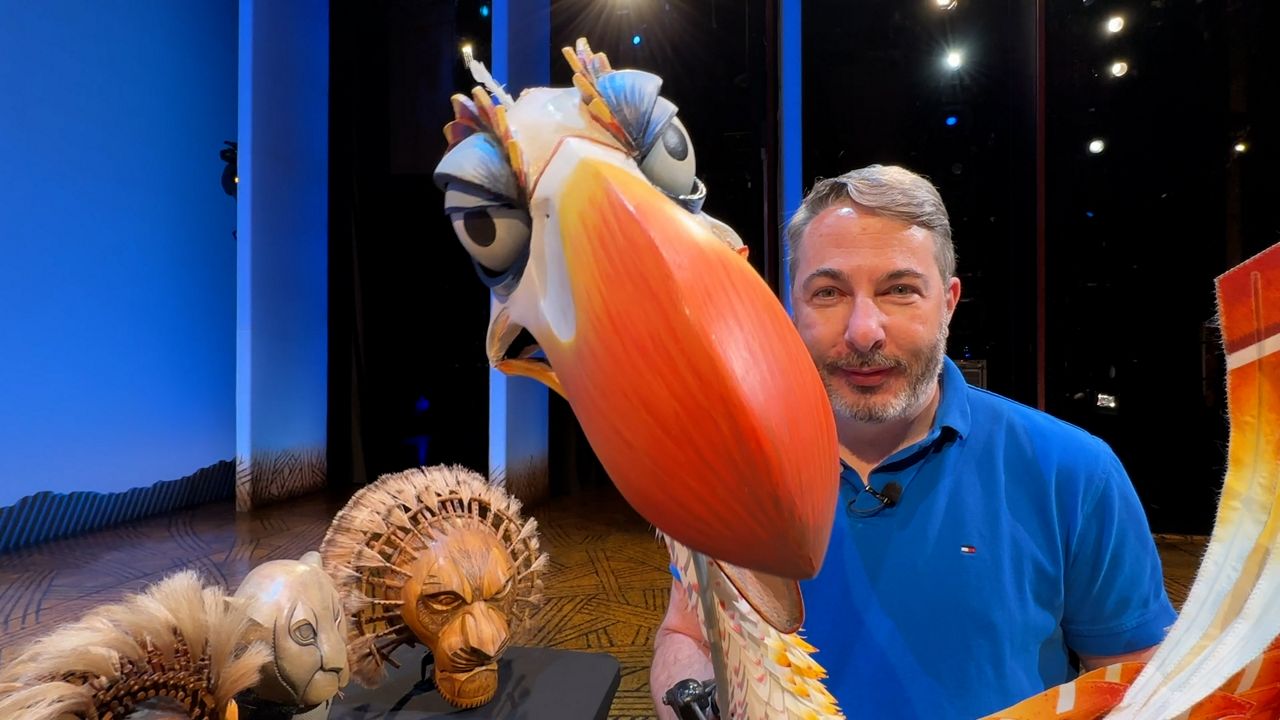LOS ANGELES — Few shows are still kicking after 25 years, but “The Lion King” is no ordinary show.
Groundbreaking in its 1997 Broadway debut, the Disney Theatricals musical is just as majestic as ever.
Just ask production stage manager Brian Westmoreland, who watches the opening every single night, and says it still fills him with the same wonder as when he saw it for the first time.
“I remember seeing it and literally having to say, ‘Brian, close your mouth!’ because my mouth was wide open with excitement and awe,” he recalled.
That jaw-dropping opening includes a parade of puppets down the aisles, from small spiraling birds to an enormous elephant.
“We call her Bertha,” Westmoreland chuckled, pointing up to the two person costume that hangs from the ceilings off stage left. There’s a whole menagerie backstage, quietly waiting to be brought to life by the puppeteers who don’t just operate them but embody them.
“He can blink his eyes,” Michael Reilly said of the Zazu puppet, while demonstrating the two hand controllers that independently operate many of the bird’s features.

Reilly is the puppet supervisor for this tour and says director Julie Taymor’s original vision was to have the actors be as much a part of the performance as the puppets themselves.
“You don’t want to hide the actors,” he explained. “They can emote with their faces their voices. So it would have been easy to put them into funny animal costumes. But with the puppets, it really helps you get into that story.”
A story that is set in Africa, something the stage production leans into.
“A lot of the reference that we take is directly from different African places or tribes. And that’s important because it gives authenticity to what these are,” Reilly said, gesturing to the masks worn by some of the main characters. “Africa is very much a part of our story and we want to use that in the iconography that you see here with Simba and Nala and Mufasa.”
Westmoreland says that attention to detail is also seen in the costume design. Each piece is tailored to the unique individual who wears it.
“The lionesses, they wear a costume of silk that is closer to their skin tones,” he explained. “So if someone has a darker hue, they may have beading that’s darker. If someone has a lighter hue, they might have lighter things.”
And then there is the casting — another area where authenticity has been at the forefront since day one.
“We do actually have true South Africans in the production of the show,” Westmoreland pointed out. “In our production, we have six South Africans that are currently with us. People have been with us for decades.”
“The Lion King” is a show about family, culture and tradition, so for Westmoreland bringing it to LA is extra special.
He was born and raised here, and his first professional theatre job was at the Pantages. The community of stage managers is very small and, he admits, there are not enough people of color in it. It’s something he tries to address when building his team.
“I know that when I’ve received resumes I’ve tried to pull in people,” he said. “It is small and I think it’s just because people aren’t exposed and people just aren’t being given the opportunity.”
Extending those opportunities and bringing new talent into the pack is something he does with great pride.



